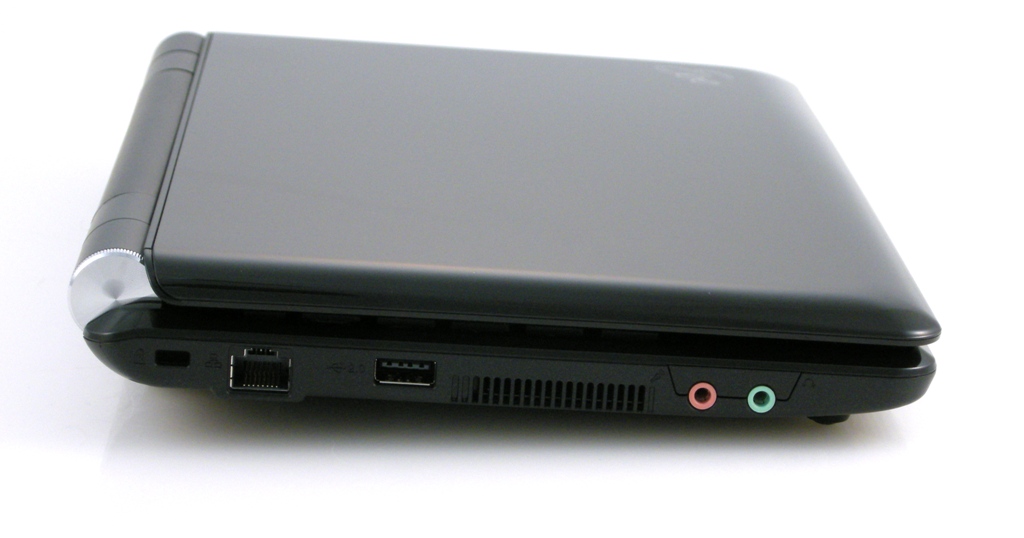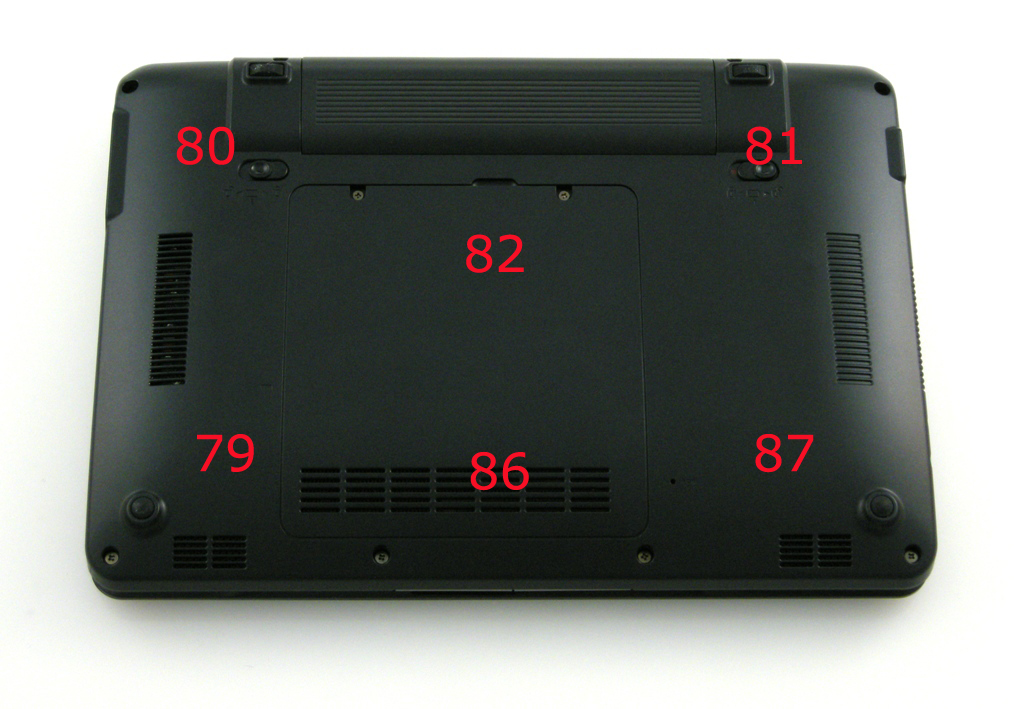Here is a view of the Asus Eee PC-1000HE battery pack that comes standard.
It does look a bit large and ugly.
_Battery_Pack.jpg)
So, why was I singing the praises of this netbook's "compact" battery design
for its long battery life?
Well, take another look at the netbook, with the battery installed...



Like magic, the bulk of the battery pack has disappeared into the bottom of the
chassis and the hinge that connects the lid to the base. It is almost invisible!
How's that for an elegant design?
Thermal considerations: Packing a lot of electronic circuitry into a small space tends to magnify problems with heat concentration. CPU chips, memory chips, graphics processor unit chips, and spinning hard drives all generate heat, and higher-perfromance versions of these components generate more heat. My older HP ZD8000 laptop is a prime example of this. The motherboard of that laptop uses a CPU chip that was really designed for a desktop PC motherboard, so it is no surprise that it sucks lots of amps of electrical cuurrent from its power supply and generates a whole lot of heat. On the other hand, the netbook is designed for thermal and electrical current conservation, which helps to maximize battery life (among other things). Did Asus succeed with the Eee PC-1000HE? You be the judge.
Here is a photo of the netbook looking at the keyboard. The red numbers indicate the
temperature (in degrees Fahrenheit) measured at specific spots. These data come from
someone else's web site, not my own measurements. Sorry, I don't recall the exact
URL where the pics came from.

And here are the temperatures on the bottom of the netbook.

All in all, not bad. You aren't going to burn your knees by setting this netbook
on your lap, or burn the palms of your hands by typing on this keyboard.
Let's talk about some applications: (Click here for Page 5)
Last edited January 1, 2010 by WØJT